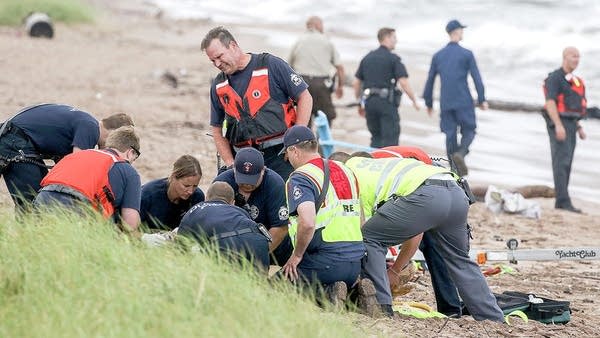Duluth drownings highlight dangers of rip currents

Personnel from the Duluth Fire Department and Gold Cross Ambulance administer CPR to a girl who was pulled from Lake Superior along the Park Point beach Thursday evening.
Clint Austin | Duluth News TribuneGo Deeper.
Create an account or log in to save stories.
Like this?
Thanks for liking this story! We have added it to a list of your favorite stories.


